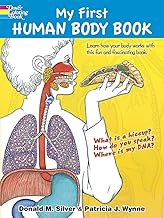GlowUp Facial Steamer GlowUp Facial Steamer
TurboCharge Car Charger TurboCharge Car Charger PureLife Water Filter PureLife Water Filter
Shop NowAquaFresh Water Bottle AquaFresh Water Bottle SmartLock Door Security SmartLock Door Security
There are a number of healthy foods that you should eat daily because they are beneficial to your health. This also includes a very specific type of chocolate, for example. We introduce you to 6 foods that should have a permanent place on your menu and that can be easily integrated into various dishes. Of course, you don’t always have to eat the same thing- a balanced diet is crucial. The following foods you should always have in your kitchen, and they are also really tasty. These Are The 6 Foods You Should Eat Every Day Whether for breakfast or in between: green tea makes you awake and fit. The caffeinated drink is an alternative for all non-coffee drinkers. The postive effects of green tea have already been proven by numerous studies. One reason for this is the catechins contained in green tea. These are secondary plant substances that have an antioxidant effect in the body. That means they prevent so-called “free radicals” from damaging the DNA. Nuts are the perfect snack for in between. Nuts contain many important nutrients and healthy fats, and thus keep you fit. A handful of nuts a day can protect you from heart attacks and strokes. The performance of the brain is also positively influenced. Nuts are ideal as an addition to your muesli or salad. The small snack for in-between tastes not only great but also has an important added value: The fruit is considered to be detoxifying and beneficial for digestion. Raspberries also contain antioxidants that can slow down skin aging and reduce the risk of cancer. In addition, berries are extremely low in calories and sugar. As a delicious addition to a smoothie, baking or muesli: Oat flakes are healthy food for everyday life. They contain fiber, valuable vitamins, minerals and at the same time little fat. The fiber, in particular, will keep you full for a long time and get you through the day well. Oatmeal can also help with gastrointestinal problems. As a healthy snack between meals, oat biscuits are highly recommended! “One apple a day keeps the doctor away” – this is by no means a myth. Apples not only strengthen the immune system, they are also high in fiber, flavonoids and polyphenols. These clean your body of metabolic toxins. The miracle fruit is also said to help with constipation and diarrhea. It is best to eat apples with their skin on- this is where most of the nutrients are. With 54 calories per 100 grams, the apple is also low in calories and perfect for a snack in between meals or for morning muesli. Make sure to wash the apple thoroughly beforehand. Surprised? You can also eat chocolate every day – but this refers to dark chocolate with no added sugar. The treat is actually a health booster: cocoa is a source of antioxidants and improves your mental performance. Chocolate is suitable as a snack between meals or as a dessert.These Are The 6 Foods You Should Eat Every Day
Published on 06/23/2021Green Tea
Nuts
Raspberries And Blueberries
Oats
Apples
Dark Chocolate
During this time, there is probably no more depressing news than the news of "Mother of an 8-month-old baby", which was originally a missing child case. But in the end, it turned out to be a case of a mother hurting her child. But during the way of the case that the media provided that information It allows us to piece together and see the history of the life of a young girl who became a teenage mother without being prepared. In addition, the path of life is very difficult. Until having to end up becoming a murderer
And now society is asking the question. “Why did you become a mother who abuses your child?” and insults her in various ways. The answer to this question is very close to me because “We are all part of the process of creating a murderer in society”, including bullying, insults. inferiority, insult Even indifference, not valuing, ignoring the violence both in the real world and online They drive a person to feel helpless, with no escape, with no way out, desperate and becoming a murderer.
Counseling psychologists pay attention to how problems and people differ across the lifespan, and they have great respect for the influence of different human traits, such as race, gender, sexual orientation, religion and disability status, on psychological well-being. They conduct counseling/psychotherapy, teach and perform scientific research with individuals of all ages, families and organizations (e.g., schools, hospitals and businesses). They believe that behavior is affected by many things, including qualities of the individual (e.g., psychological, physical or spiritual factors) and factors in the person’s environment (e.g., family, society and cultural groups).
Featured Products

SmartPlugs WiFi Outlets SmartPlugs WiFi Outlets
AquaPlay Water Toys AquaPlay Water Toys ToneTwist Core Trainer ToneTwist Core Trainer ZenSleep White Noise Machine ZenSleep White Noise Machine
View Product
SunPower Solar Panels SunPower Solar Panels
EcoWise Reusable Food Wrap EcoWise Reusable Food Wrap ZenBreathe Breathing Trainer ZenBreathe Breathing Trainer
View Product
FlexRun Running Shoes FlexRun Running Shoes
GoodGlow Self-Tanning Mousse GoodGlow Self-Tanning Mousse HealthMate Infrared Sauna HealthMate Infrared SaunaMightyMop Floor Cleaner MightyMop Floor Cleaner
View Product